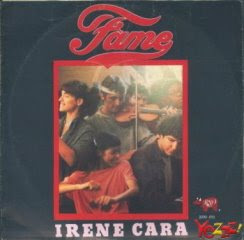 Visually The Blow Monkeys were a quintessentially 80s band - stylish and sophisticated, with a slickness that seemed straight from the fashion handbook of the ‘brat pack’. In musical terms their style was painted with a broader palette, innovative and even provocative but eminently chic.
Visually The Blow Monkeys were a quintessentially 80s band - stylish and sophisticated, with a slickness that seemed straight from the fashion handbook of the ‘brat pack’. In musical terms their style was painted with a broader palette, innovative and even provocative but eminently chic.British born Bruce Howard had spent his formative years living in Australia where he developed an insatiable appetite for pop music, collecting thousands of vinyl 45s during his teen years. His first experience as a performer came busking at Sydney’s Circular Quay in the late 70s, followed by a stint in the Darwin based punk band Exhibit A. He returned to England ready to try his hand at recording some 45s of his own. Adopting the moniker of Dr. Robert, vocalist/guitarist
 Howard formed the Blow Monkeys with Mick Anker (bass), Neville Henry (saxophone) and Tony Kiley (drums).
Howard formed the Blow Monkeys with Mick Anker (bass), Neville Henry (saxophone) and Tony Kiley (drums). The Blow Monkeys released their debut album in 1984. ‘Limping For A Generation’ wasn’t indicative of the upbeat pop sound to come, drawing on a darker post-punk new wave sound, and failed to make any impact. Songwriter Dr. Robert rewrote the prescription to come up with a sound that would prove far more appealing in commercial terms. Their 1986 sophomore album ‘Animal Magic’ (UK#21,US#35,OZ#54) benefited hugely from the lead out track ‘Digging Your Scene’. The song oozed the style that the band’s image evoked, a smooth soul-pop track that was just plain cool. ‘Digging Your Scene’ burrowed its way into
 world charts (UK#12,US#14,OZ#16, Ger#25,Hol#37, IT#24) and put The Blow Monkeys on the map. The follow up single ‘Wicked Ways’ (UK#60) missed capitalising on the band’s initial success.
world charts (UK#12,US#14,OZ#16, Ger#25,Hol#37, IT#24) and put The Blow Monkeys on the map. The follow up single ‘Wicked Ways’ (UK#60) missed capitalising on the band’s initial success.January 1987 saw the release of the album ‘She Was Only A Grocer’s Daughter’ (UK#20,OZ#88). Despite the classy song ‘It Doesn’t Have To Be This Way’ (UK#5,OZ#88), which was very much in the same style as ‘Digging Your Scene’, the band couldn’t consolidate on their earlier foray into the U.S. market. Although the song did feature prominently in a scene from the comedy flick ‘Police Academy IV: Citizens On Patrol’ (if you’ve seen the film you’ll recall the touching romantic encounter in the park
 featuring Bobcat Goldthwaite’s manic character). The Blow Monkeys also contributed the track ‘You Don’t Own Me’ to the hit 1987 soundtrack ‘Dirty Dancing’ (a cover of the old Lesley Gore hit). Two more solid singles followed in ‘Out With Her’ (UK#30) and ‘(Celebrate) The Day After You’ (UK#52), the latter featuring Curtis Mayfield.
featuring Bobcat Goldthwaite’s manic character). The Blow Monkeys also contributed the track ‘You Don’t Own Me’ to the hit 1987 soundtrack ‘Dirty Dancing’ (a cover of the old Lesley Gore hit). Two more solid singles followed in ‘Out With Her’ (UK#30) and ‘(Celebrate) The Day After You’ (UK#52), the latter featuring Curtis Mayfield.1989’s ‘Whoops! There Goes The Neighbourhood’ (UK#46) proved a noteworthy effort, yielding a number of solid chart hits in the U.K. The biggest of these was ‘Wait’ (UK#7), which was actually credited to Robert Howard and Kym Mazelle, and is ackowledged as one of the earlier examples of house music. The band received the credit for the others hits, ‘This Is Your Life’ (UK#32) and ‘Choice?’ (UK#22), the
 latter featuring vocalist Sylvia Tella. It’s worth observing that the Blow Monkeys also wore their political affiliations (anti-conservative) very strongly on their lyrical sleeve, though to their credit the political manifesto element to their lyrics didn’t compromise the music side of things. A greatest hits package ‘Choices’ was also released in 1989 and gave the band their only top five album.
latter featuring vocalist Sylvia Tella. It’s worth observing that the Blow Monkeys also wore their political affiliations (anti-conservative) very strongly on their lyrical sleeve, though to their credit the political manifesto element to their lyrics didn’t compromise the music side of things. A greatest hits package ‘Choices’ was also released in 1989 and gave the band their only top five album.But by this stage the Blow Monkeys’ achievements were restricted pretty much to the U.K. market. Their final album, 1990’s ‘Springtime For The World’, though inventive in its engagement with world music elements, reflected the decline in interest in the band by mainstream pop aficionados, with
 only the title track (UK#69) making the charts. Dr. Robert pulled the plug on the Blow Monkeys shortly after. He then recorded under the pseudonym of Slam Slam for a brief time, collaborating with vocalist Dee C. Lee, and followed this with several solo efforts (in fact releasing five solo albums from 1994 to 2001). Dr. Robert also worked with Paul Weller on Weller’s debut solo album ‘Wild Wood’ post The Style Council, a logical association given both The Blow Monkeys and The Style Council weren’t averse to infusing a café style soul element to their work. His most recent solo release was actually in partnership with PP Arnold on 2007’s ‘Five In The Afternoon’.
only the title track (UK#69) making the charts. Dr. Robert pulled the plug on the Blow Monkeys shortly after. He then recorded under the pseudonym of Slam Slam for a brief time, collaborating with vocalist Dee C. Lee, and followed this with several solo efforts (in fact releasing five solo albums from 1994 to 2001). Dr. Robert also worked with Paul Weller on Weller’s debut solo album ‘Wild Wood’ post The Style Council, a logical association given both The Blow Monkeys and The Style Council weren’t averse to infusing a café style soul element to their work. His most recent solo release was actually in partnership with PP Arnold on 2007’s ‘Five In The Afternoon’. As with so many 80s pop alumni, The Blow Monkeys dusted off the back catalogue and reunited in 2007. The original quartet have recorded an album of new material ‘Devil’s Tavern’ and have a British tour scheduled in support of the album‘s release during September 2008.
As with so many 80s pop alumni, The Blow Monkeys dusted off the back catalogue and reunited in 2007. The original quartet have recorded an album of new material ‘Devil’s Tavern’ and have a British tour scheduled in support of the album‘s release during September 2008.

















































